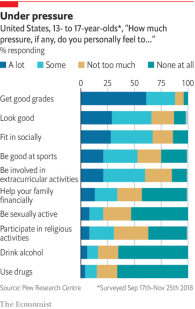It must be jarring. Imagine opening the new Sunday-school manual of the Church of Jesus Christ of Latter-day Saints and finding cruel racist histories and warnings against racial mixing. It’s not that plenty of white Christians aren’t sincere about fighting racism. But episodes like this show how paper-thin those efforts are, given the nasty history of white racism. It’s not only LDS, by any means. The history I researched in Fundamentalist U shows the same Get-Out-level nastiness in white evangelical institutions.
Here’s what we know: The LDS hierarchy recently apologized for a glaring “error.” (I know, we’re not supposed to use “LDS” anymore, or “Mormon,” but calling it the whole long name every time seems crazy.) The new Sunday-school manual included old language about race, ideas the LDS church no longer teaches. Most shocking, the new 2020 manual says the following:
“The dark skin was placed upon the Lamanites so that they could be distinguished from the Nephites and to keep the two peoples from mixing,” the book explains, citing a statement made some 60 years ago by then-apostle and future church President Joseph Fielding Smith.
Erm.
Today, a spokesman announced, LDS churches “unequivocally condemn all racism, past and present, in any form.” Good for them. Nevertheless, this episode serves as a reminder of the explicit, official racism that was church policy until very recently. It helps show how inadequate it is to simply promise not to be racist anymore; it helps demonstrate why we haven’t moved beyond our racist history, even if many people would like to believe we have.
It certainly isn’t only a problem among LDS churches. I just finally ordered my copy of Jemar Tisby’s Color of Compromise. I’m looking forward to reading it. As I found in the research for Fundamentalist U, many evangelical colleges have an ugly history of racism. These days, even the schools with the most aggressively racist histories have disavowed racism, officially at least. But like the LDS “error,” its legacy is clearly visible. Like the painfully tense garden-party scene in Get Out, the history of institutional racism has been awkwardly papered over, leaving a painfully inadequate no-longer-racism where all the racism used to be.
Just a reminder: Yes, Bob Jones University—like the LDS—issued in 1960 a searing “Biblical” defense of racial segregation. But even up north, evangelical institutions such as Wheaton College and Moody Bible Institute suffered from explicit intentional racism.
At Wheaton, for example, in the 1950s there was only one integrated student club. Ironically, that was the Dixie Club for southern students. As one white Wheaton student later remembered from that era, one African American student seemed to prefer the company of her white southern friends, “even though obviously we represented repression for her in some ways.”
 As historian David Swartz described in his terrific book Moral Minority, Wheaton tried hard to become less racist. It led to some strange tensions. One white anti-racist faculty member in the 1960s edited an anti-racist newsletter, Freedom Now. If Wheaton students wanted a copy, they could get one at the campus bookstore, but only by asking for it by name. Copies were kept under the counter.
As historian David Swartz described in his terrific book Moral Minority, Wheaton tried hard to become less racist. It led to some strange tensions. One white anti-racist faculty member in the 1960s edited an anti-racist newsletter, Freedom Now. If Wheaton students wanted a copy, they could get one at the campus bookstore, but only by asking for it by name. Copies were kept under the counter.
Wheaton wasn’t the only prominent evangelical school to wrestle awkwardly with its own institutional racism. At MBI, in 1952 an interracial couple was asked to split up. As Dean Maxwell Coder reported internally, he asked them
not to associate on or off the campus in anyway [sic] that would attract attention to themselves as a couple and give rise to criticism . . . because of the racial problem involved.
By 1970, MBI had taken bolder steps to fight its own racist history. In that year, segregationist fundamentalist John R. Rice had been invited to give a prominent talk at MBI. Rice had continued his pro-segregation rhetoric. MBI disinvited him. (For the intensely awkward details, see here. The MBI leaders had a hard time settling on language that would satisfy all parties.)
I recognize and admire the efforts of lots of white evangelical activists who have tackled this racist history, now and in the past. Yet it just doesn’t feel like quite enough. In the end, I agree with one LDS scholar:
The manuals “should have been shredded when this egregious error was found prior to international distribution,” said Jerri Harwell, associate professor in Salt Lake Community College’s English, linguistics and writing studies department. “The money that would have been lost on this is nothing compared to one day’s interest on $100 billion in [the church’s] reserves.”














 SOCIALISM 2020
SOCIALISM 2020 Country dog? City dog? An
Country dog? City dog? An 








